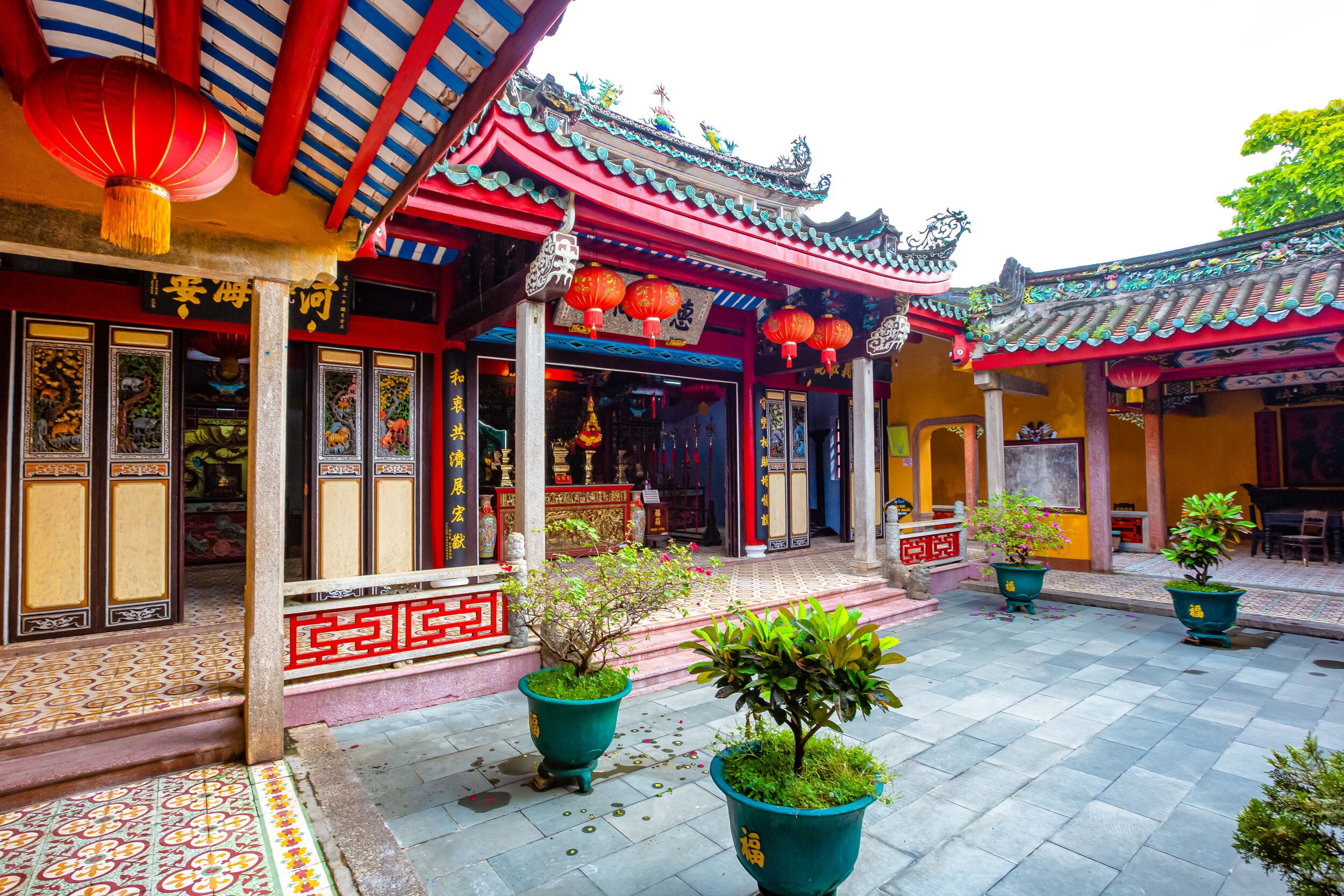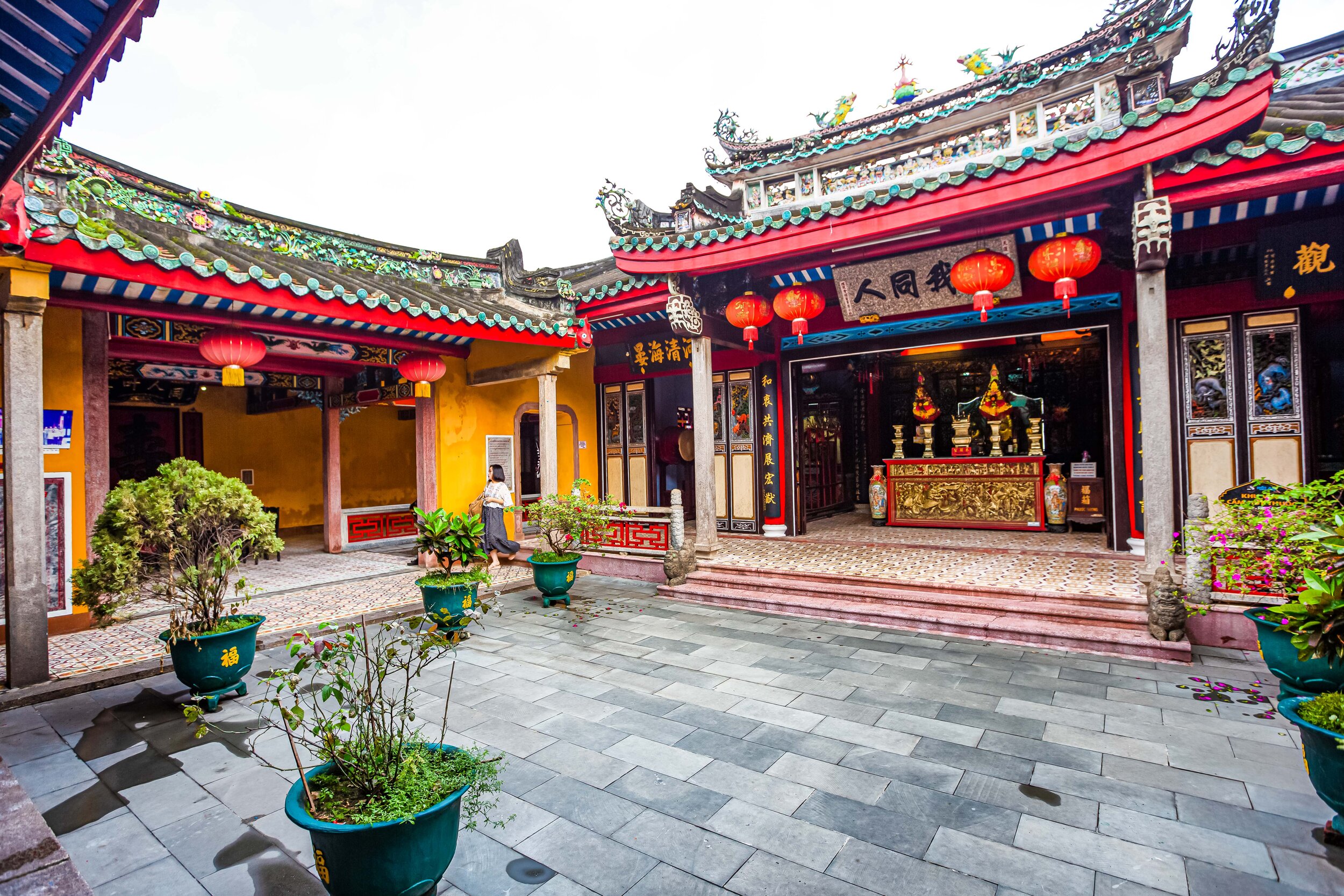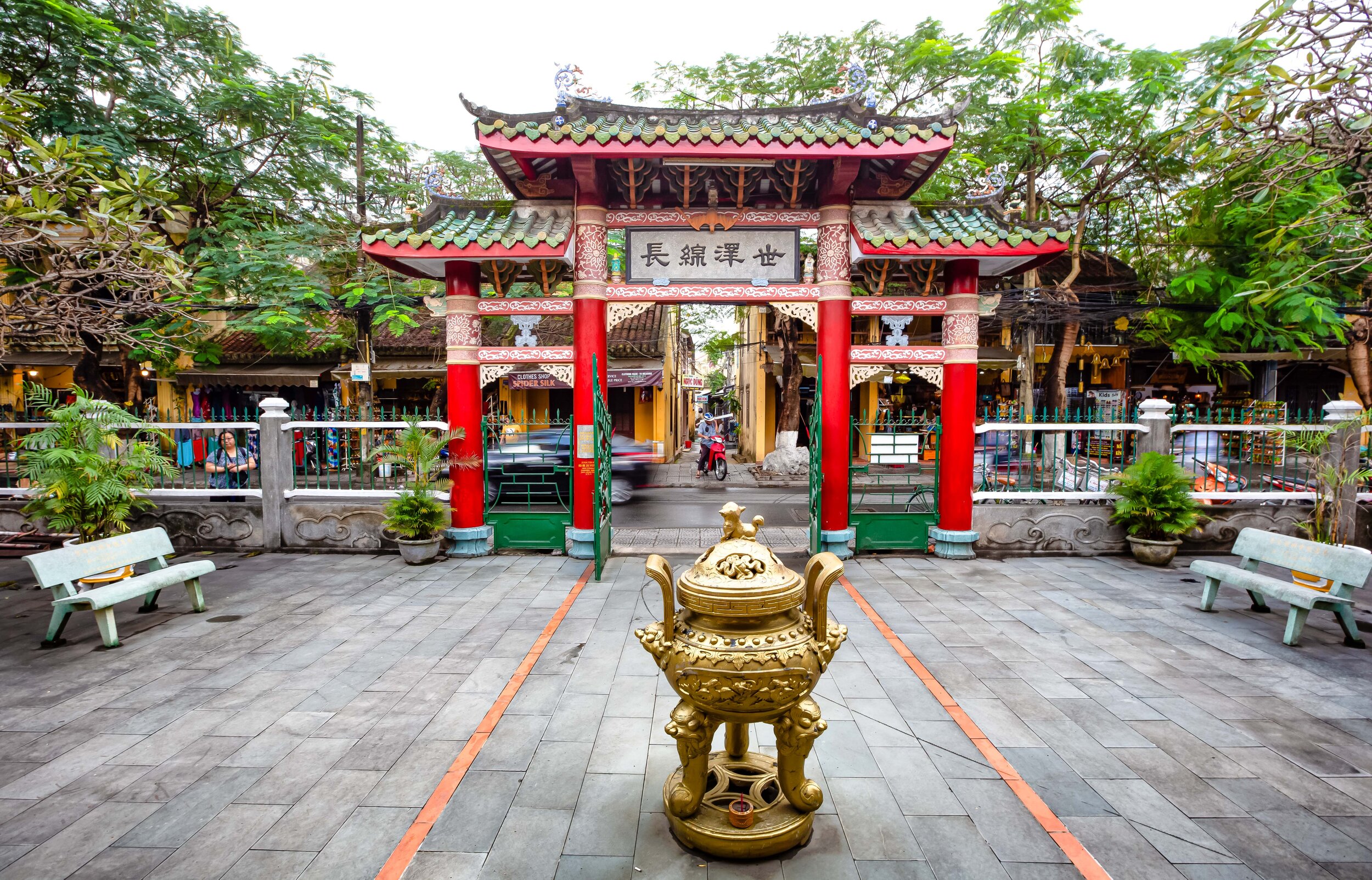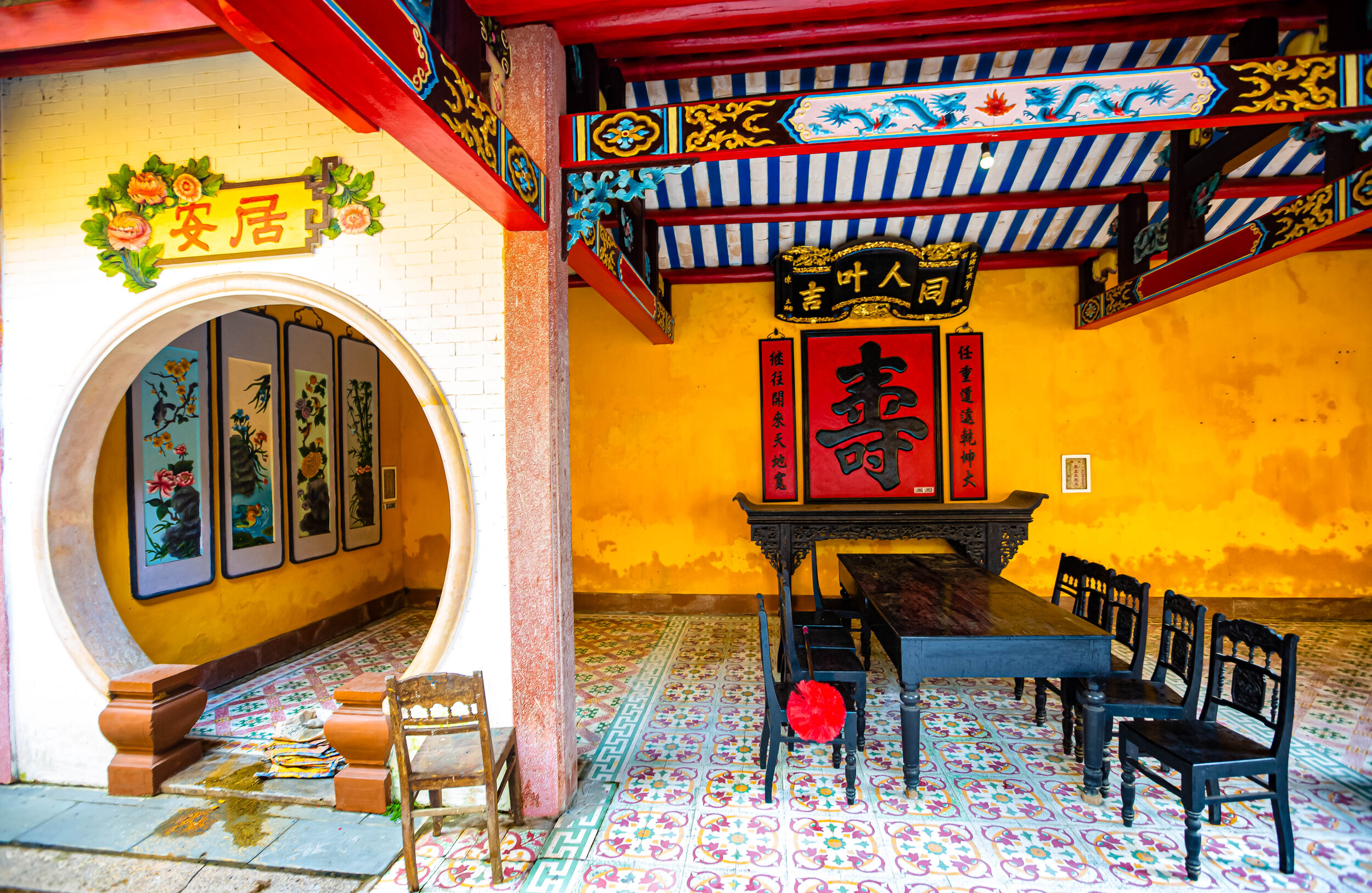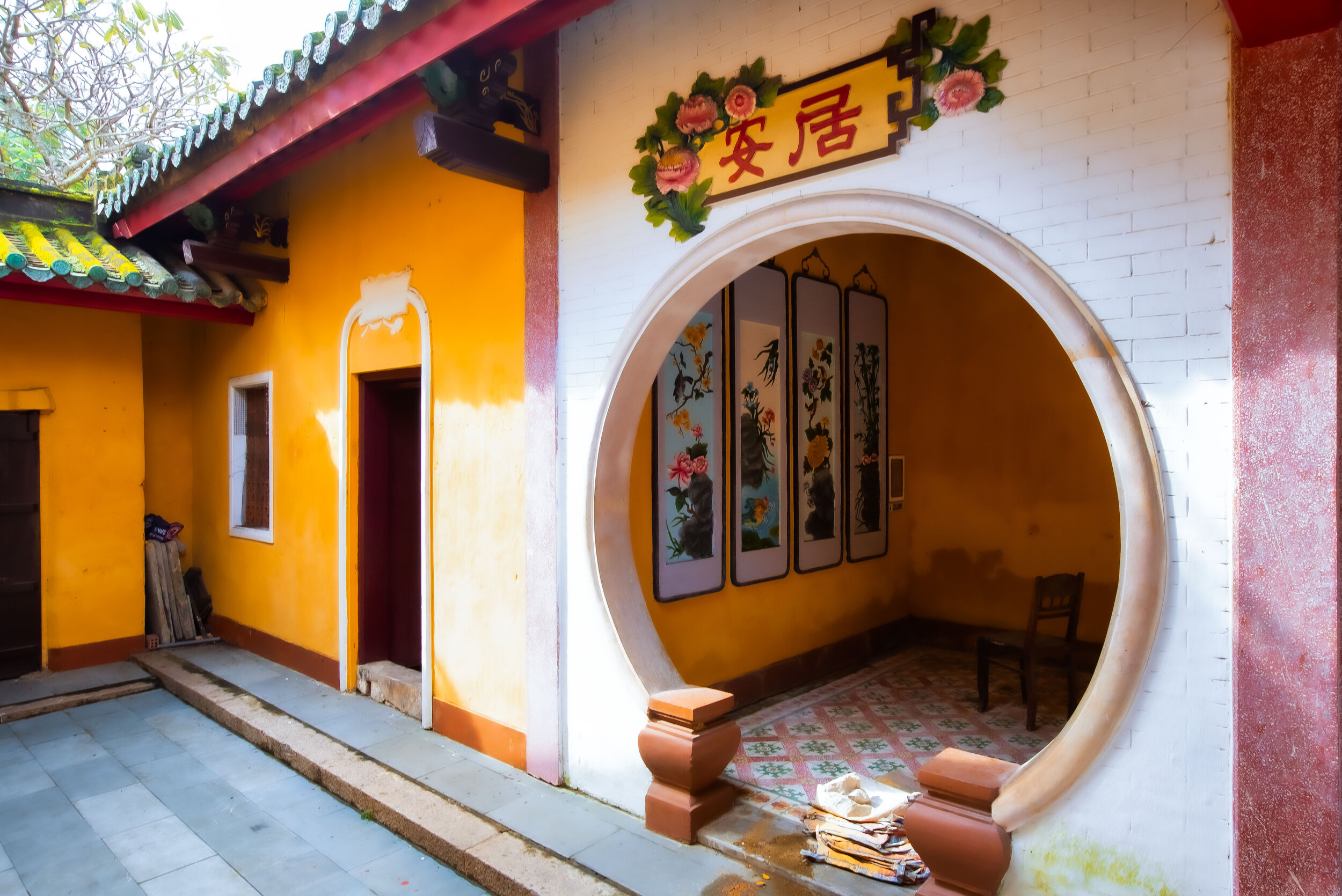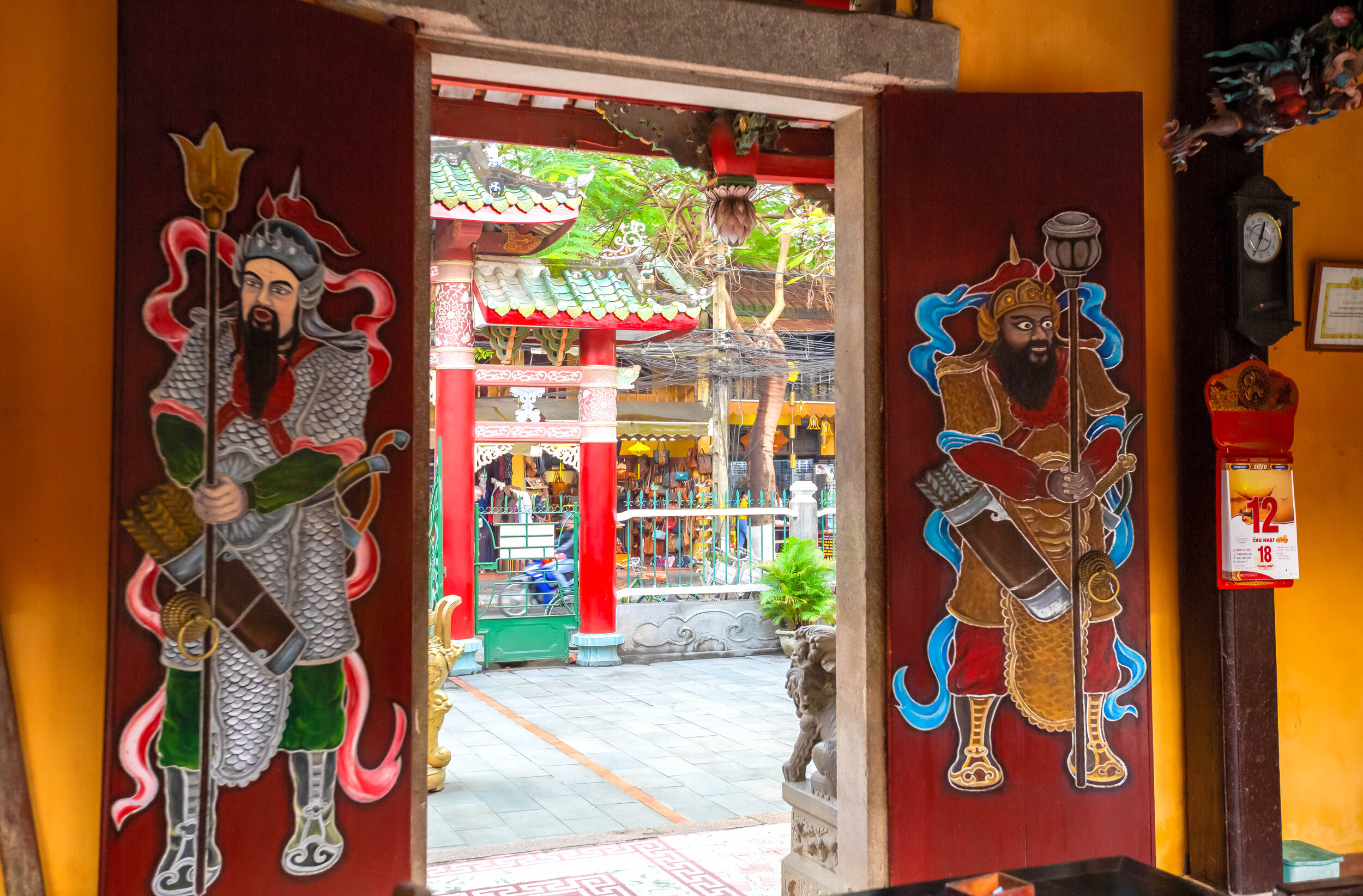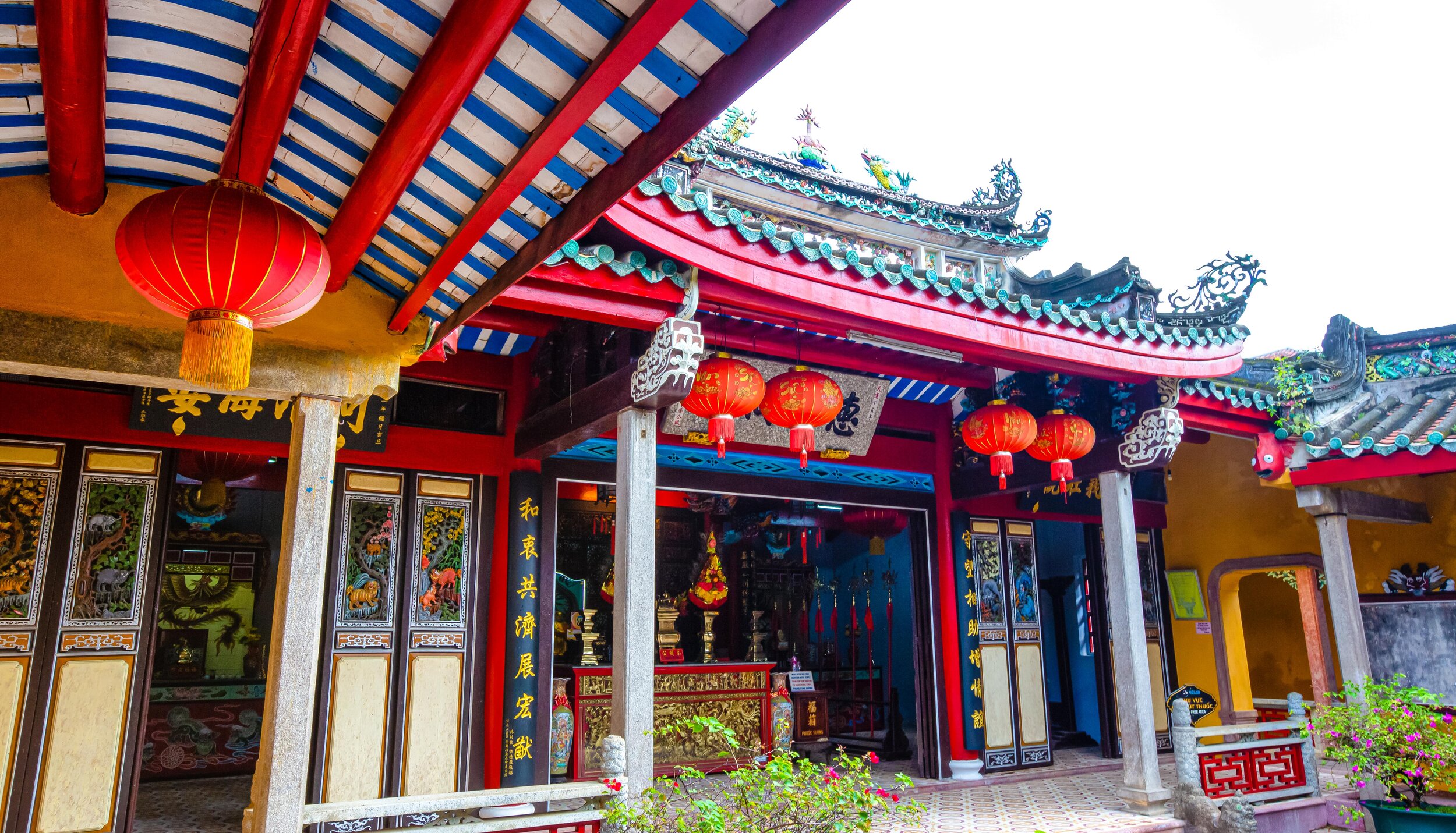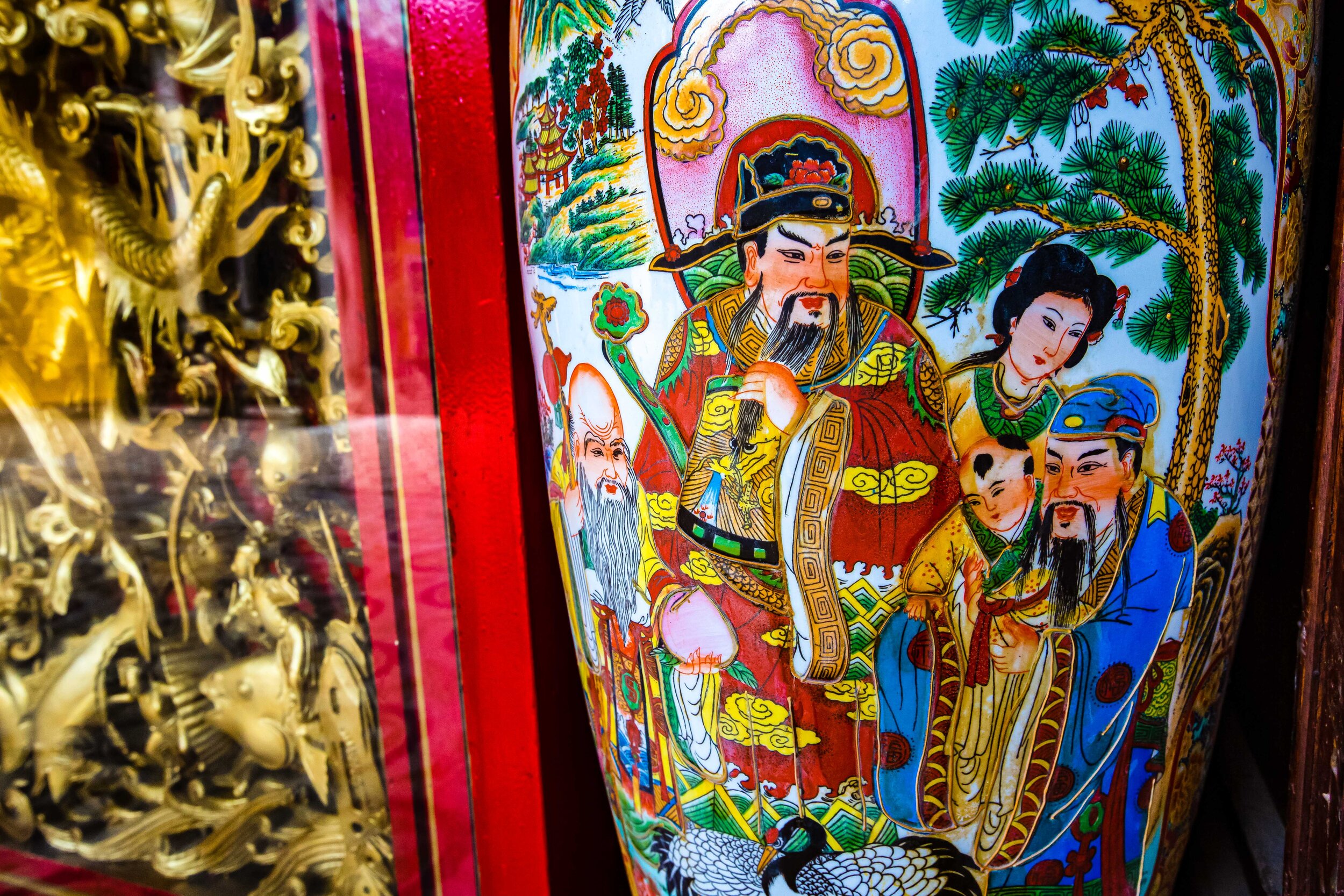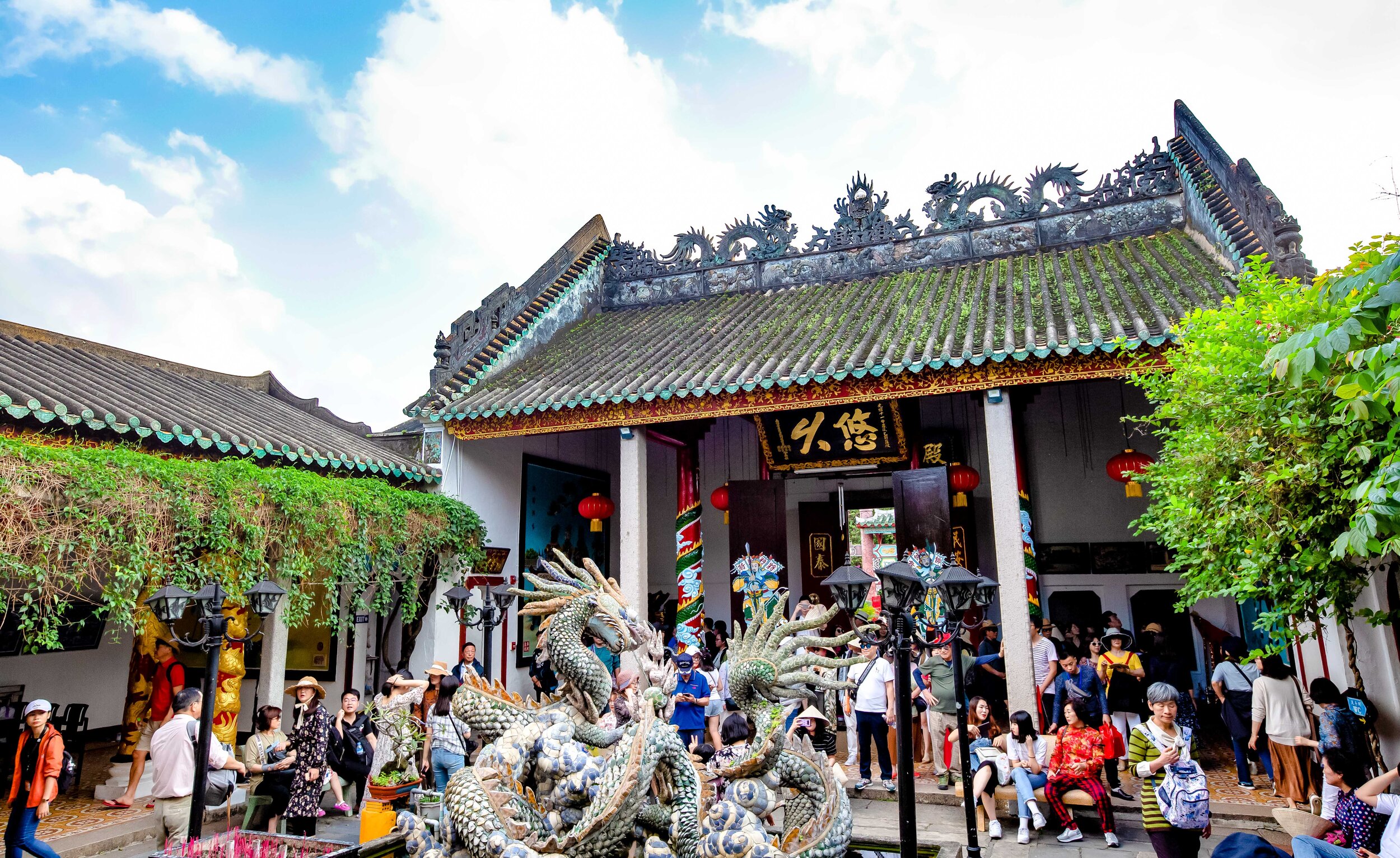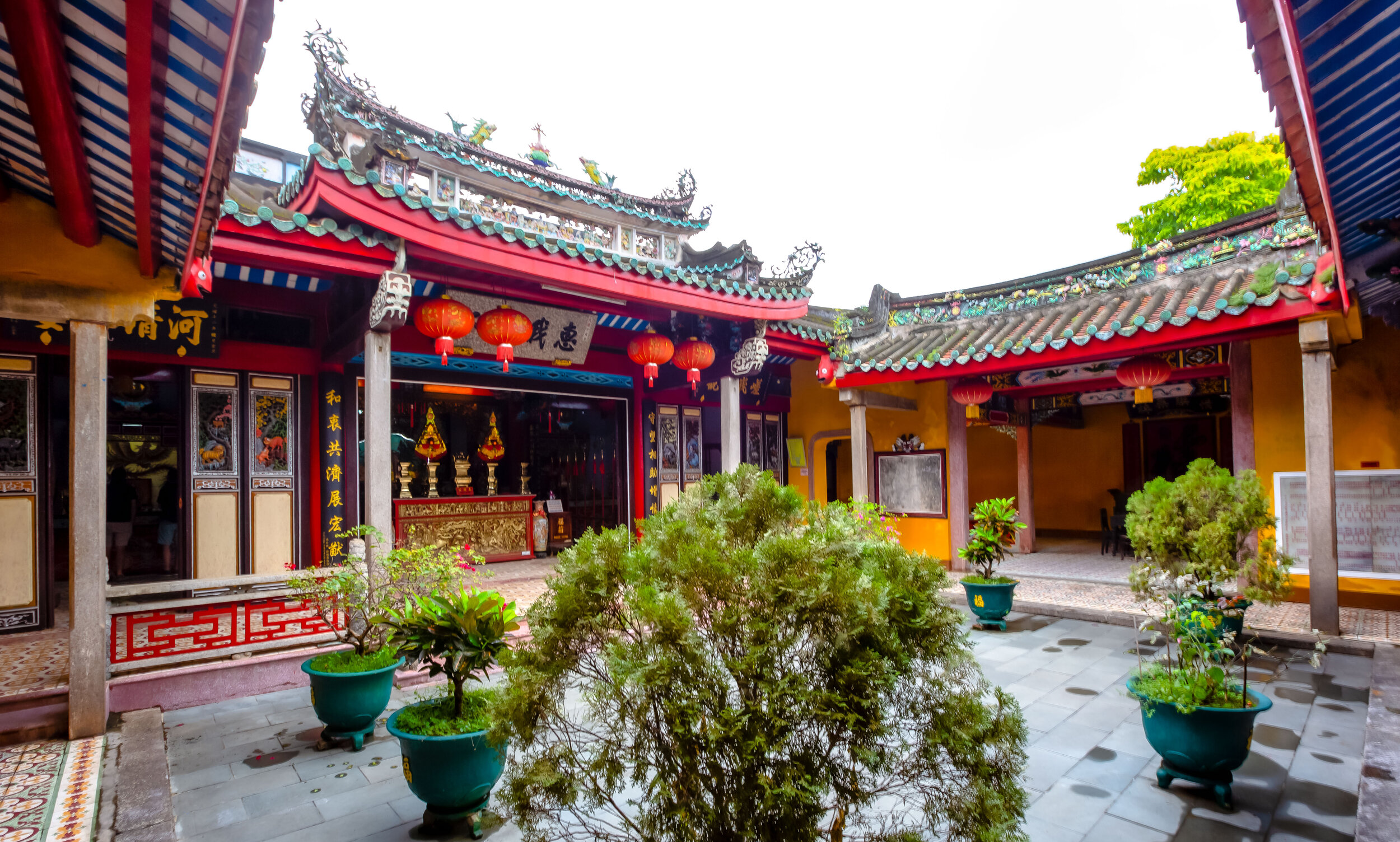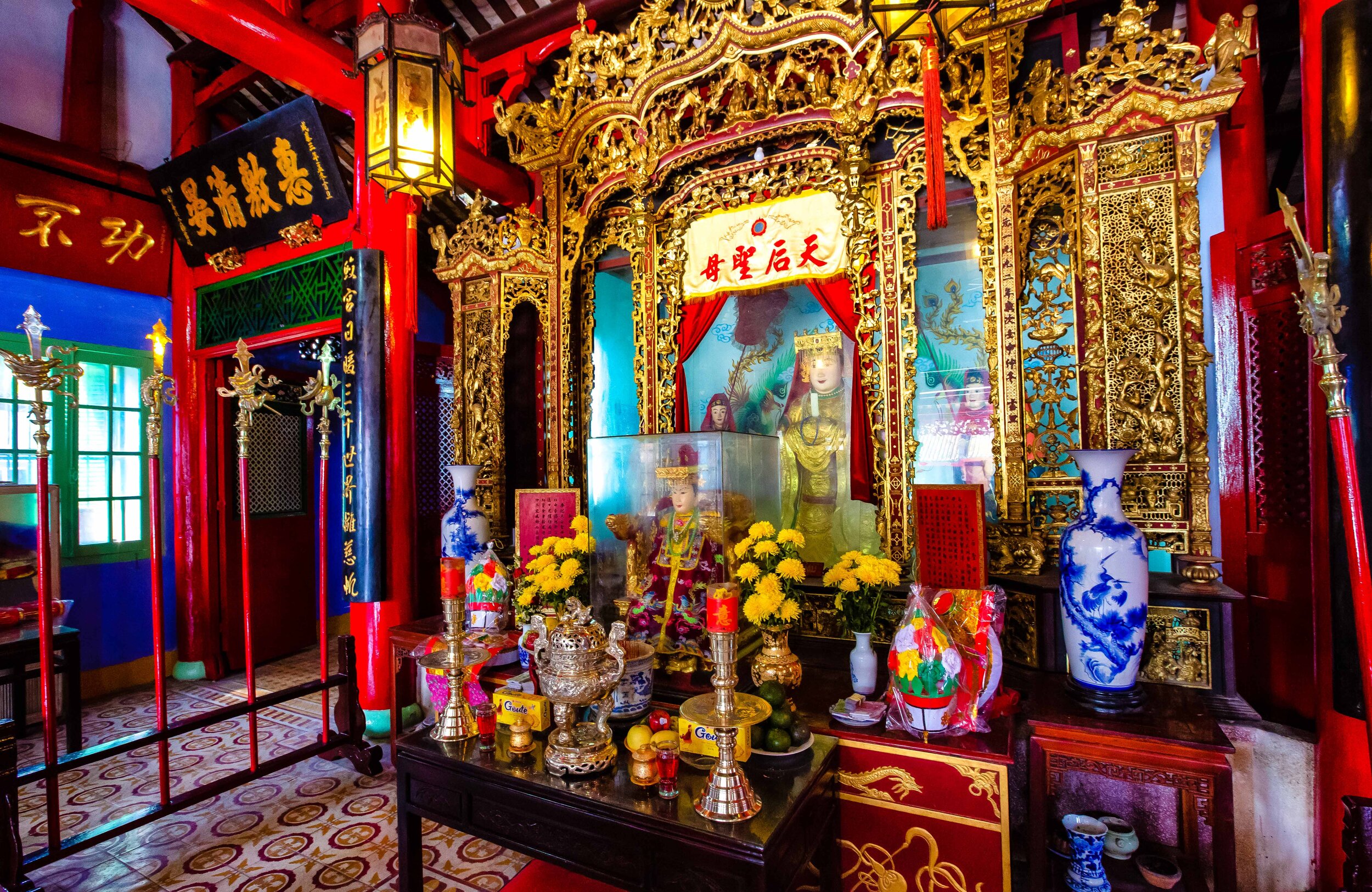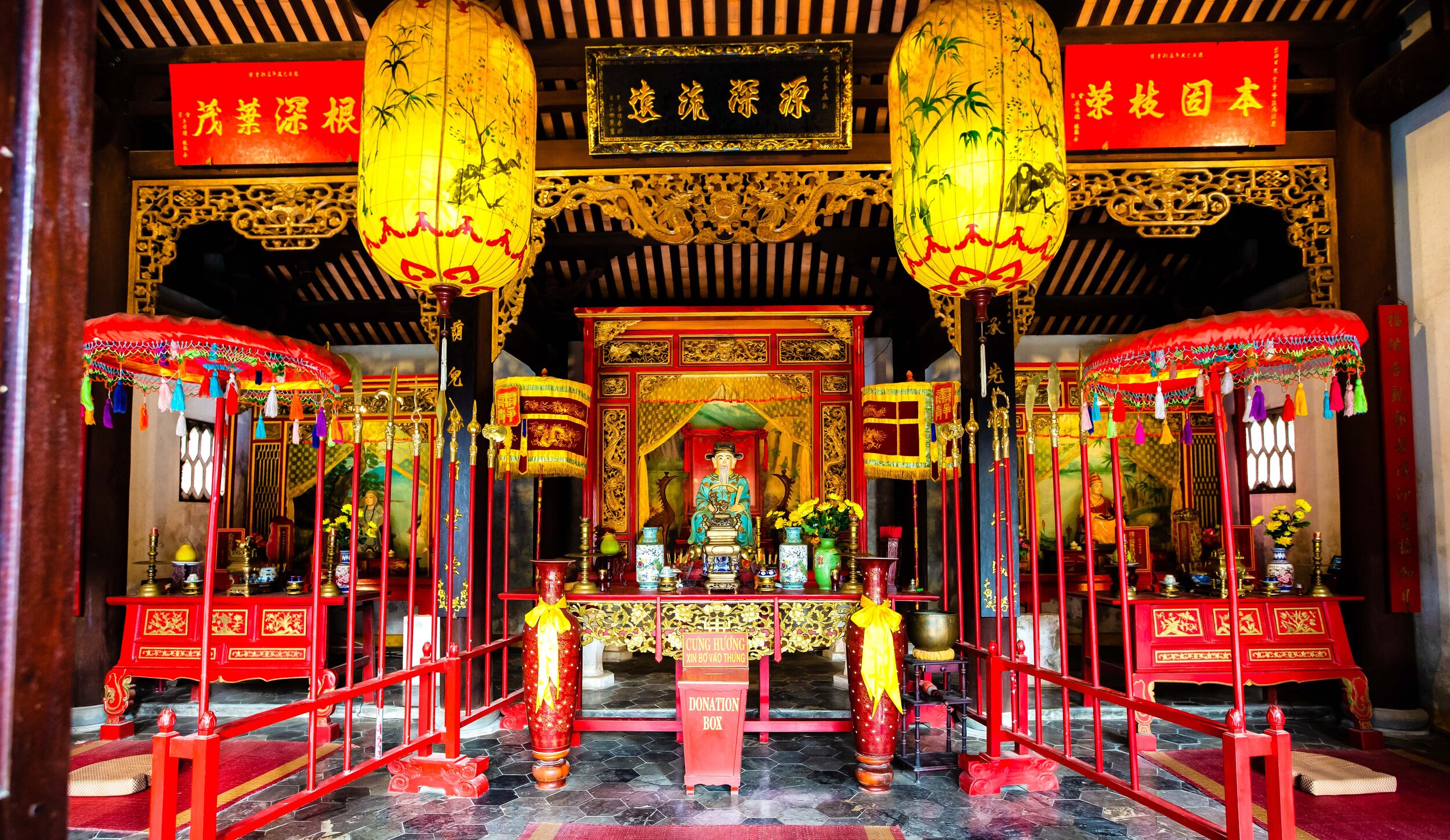While planning for my trip to Hoi An, I was excited that I would have to opportunity to visit all of the historic Overseas Chinese Assembly Halls in town. I’d be lying though if I didn’t admit that I was especially excited about the Fujian and Chaozhou halls though as I figured that they would be quite similar to the temples and traditional homes that I’ve become accustomed to here in Taiwan.
I figured that part of my trip would be a case study in the ways that these immigrant groups changed to adapt to their new surroundings both in Vietnam as well as in Taiwan. With those two in particular though, it was all about familiarity. I knew I would completely understand everything I was going to see when I got there and they didn’t disappoint.
I’m a bit of a history nerd though, so what fun would I be having if I was just exploring the places that I’d be most familiar with? When it came to the other Assembly Halls in Hoi An that I planned on exploring, there would be a certain level of familiarity with what I’d be seeing, but I’d also be able to learn quite a bit about the experience of other groups of Chinese immigrants and their cultures.
Of the other halls on my list, the one that probably excited me the most was the Hainan Assembly Hall.
There are a few reasons for this - The first being that Hainan is a place in China that I don’t really know very much about in terms of the local culture and architecture. It was however also a hall that had a very special history in Hoi An and coincidentally also stood out from the rest because it was the last one in town to open up for tourism.
When I finally arrived at the gate of the Assembly Hall, I wasn’t disappointed.
It was one of the prettiest in town and the history was absolutely fascinating.
Before I get into any of that though, if you’d like to learn more about “Assembly Halls” before reading about this one, I recommend reading my earlier post about the Chinese Assembly Halls of Hoi An where I describe them in more detail.
Hải Nam Assembly Hall (瓊府會館)
The Hainan Assembly Hall is one of the ‘youngest’ of all the halls in Hoi An, but due to the fact that it hasn’t been open for tourist for very long, most of the information you’ll find about it on the internet is hit-and-miss.
One of the areas where people seem to really disagree when it comes to this hall is on some of the important dates in its history - namely 1851, 1875 and 1891.
So let me clear things up.
The Assembly Hall wasn’t constructed in 1851 as quite a few places insist.
What happened in 1851 was an unfortunate event that would ultimately lead to the construction of the hall.
What kind of unfortunate event you might ask? Well, a massacre that included pirates.
Likewise, the Assembly Hall wasn’t constructed in 1875.
That was the year when the events that took place in 1851 were finally solved and under immense public pressure, the Emperor of Vietnam offered a formal apology to the immigrants from Hainan, granted deity status to those who were murdered and also donated funds for the construction of the hall.
Construction actually started in 1883 and would be completed a few years later in 1891.
You might think that a construction period of eight years is quite long, but the reason why it took so long was due to the fact that most of the materials for the construction of the hall were hand made and transported directly from Hainan.
I won’t bore you with fine details of the construction, but the key thing to remember as to why this Assembly Hall stands out from some of the others in town is due to the circumstances regarding its construction. All of the other halls were constructed using funds donated by the immigrant community in Hoi An.
The Hainan Assembly Hall however was constructed with funds donated directly by the Vietnamese Emperor.
Having the support of your local community is one thing, but having the financial support of the Emperor is another thing entirely (even if that support came under unfortunate circumstances).
Design
To the untrained eye, from the outside looking in, the Hainan Assembly Hall might seem rather ‘plain’ compared to the other halls that you’ll find in Hoi An. That might also be why there are so few tourists inside.
You’ll have to trust me though, that isn’t really the case - The Hainan Assembly Hall might not be as flashy as the others, but it is truly one of the most significant tourist destinations in Hoi An and if you pass by thinking that you don’t want to use one of the tickets on your tourist pass to check it out, you’d be doing yourself a disservice.
The layout of the hall was constructed using the traditional Chinese ‘Two Hall Two ’ (兩殿兩護龍室) architectural style which simply means that there is a Front Hall (前殿), Main Hall (正殿), an Open Air Courtyard (中程) and two covered halls on both the Eastern (左護龍) and Western (右護龍) sides, forming what looks like a square from above.
The Front Hall, which opens to the road serves as both the gate and greeting area for the Assembly Hall.
From the outside, the Front Hall actually looks a little plain and is only separated from the main road through town by a fence with some typical the typical yellow Hoi An-style pillars.
Once you actually walk into the hall though, you’ll notice that it is considerably larger than it appears from the outside and features a large space where people can hang out for a chat or have some tea.
Once inside you’ll find a small shrine dedicated to the Earth God (福德正神) on your right and a plaque on the wall that explains the storied history of the hall (in several languages) which most importantly tells the story of the ‘108 Brothers’ to whom the shrine inside is dedicated.
Beyond the Front Hall is the large open-air courtyard which features a well-maintained natural space with potted plants on either side that are arranged in a way that forms a pathway to the to the Main Hall.
Compared to the other Assembly Halls around town, this one stands out as probably the most organized and well-maintained of the lot with the greenery adding to the beauty of the hall rather than taking away from it.
On both the Eastern and Western sides of the hall you’ll find the ‘Assembly Hall’ sections in what are known in Chinese architecture as Protective Dragons (護龍). Both of these wings are where the Hainan immigrants would hold meetings, events or large gatherings. Today the spaces are mostly empty, but you’ll find some tables and chairs inside with decorations on the walls.
On each side there is also a room to the rear where where you’ll find Ancestral Worship shrines dedicated to the generations of Hainanese people who immigrated to Hoi An.
Before I move on to talk about the main hall, I’d like to take a minute to explain the reason why I enjoyed visiting this hall as much as I did the larger, more popular halls. When I visited the Fujian Assembly Hall, I got to appreciate the Hokkien architecture and porcelain decorations. Likewise, the Chaozhou Assembly Hall is notable for its beautiful wood-carvings. These architectural styles and decorations are indicative of their respective homelands.
What then stands out at the Hainan Assembly Hall? For me, it was the well-maintained courtyard that offered a natural space which blended together harmoniously with the simplicity of design and the addition of a beautifully constructed Worship Hall (拜亭) connected to the main hall.
Likewise, if you are looking for a place where you’ll find the attention to detail when it comes to ‘Feng Shui’ (風水), then look no further to this hall. Even if you don’t believe in all that Feng Shui stuff, you’ll certainly be able to agree that there’s a certain calming nature to this hall, especially since outside its walls are thousands of tourists making a bunch of noise.
‘Worship Halls’ are typically four-sided pavilion-like structures that are added to the front entrance of a temple, much like a veranda on a house. The roof on the Worship Hall is a bit higher than what you’ll see on the eastern and western wings, with the roof on the Main Hall behind it rising just a little higher, which makes for some interesting shapes and also makes it seem like there are several different levels.
Honestly, its a bit hard to explain the detail of the roof in simple terms, but believe me, the design here is second-to-none in Hoi An and even though the Hokkien people of Fujian are known for their “swallow-tail roof” design, I feel like the addition of the Worship Hall here adds to the design making it one of the prettiest Assembly Halls in tow.
Placed just under the roof of the Worship Hall you’ll find the Chinese characters “昭應殿” (zhāo yīng diàn) placed on a plaque. This is the official name of the place of worship inside the Main Hall and more or less means that ‘You’ve come to the right place if you’re looking for answers to your problems’.
Main Hall (正殿)
As I’ve already mentioned, the shrine area of this hall is a bit different than what you’ll find at all of the other Assembly Halls in Hoi An. In the others you’ll find shrines with statues dedicated to Chinese folk religion, Taoist and Buddhist figures such as Mazu (媽祖), the God of War (關公) and Guanyin (觀音).
The three shrines in this hall though don’t feature any statues - all you’ll find are Spirit Tablets (牌位), which are tablets that ‘represent’ deities.
Link: Spirit Tablet (神主牌)
The main shrine in the temple is dedicated to the ‘108 Brothers’ who are also known as ‘Xiongdi Gong’ and are part of an interesting (and unfortunate) story that will forever link Vietnam and the island of Hainan.
The story of the “Nghia Liet Chieu Ung” or the ‘One Hundred and Eight Brothers’ (一百零八兄弟) is an interesting one and over the years has become a religious tradition that has spread throughout the world in areas where the people of Hainan have immigrated - but is directly linked to Hoi An!
In 1851, during the late stages of the Qing Dynasty, the economic and political situation in China was pretty terrible (part of the reason why so many people start immigrating to South East Asia), so to earn a living many in Hainan started traveling back and forth to Vietnam for seasonal work.
The story of what actually happened tends to vary, but most accounts go something like this: A boat carrying 109 Hainanese was attacked by Vietnamese pirates (or possibly rogue government officials) and all but one of them was robbed and murdered. The one person left remaining was a cook who had hid himself on the lower deck of the ship and lived to tell the story about what happened to all of the people on the boat.
It is said that while the massacre was taking place a storm suddenly appeared at sea and flocks of crows crowded around the Vietnamese Emperors palace - It would later be explained to the Emperor that the crows were there as a warning that a great crime had taken place and would not leave until the crime was solved.
Years later, while browsing a market in Hoi An, a Hainanese immigrant came across a man wearing a ring that he had personally given to one of the people who were massacred. After a fight, both men were arrested and it was discovered that the man wearing the ring was one of the pirates who took part in the massacre.
After admitting to his crime, the Emperor ordered all of his companions to be rounded up and all of their loot confiscated. The Emperor then performed a ritual prayer to help give peace to the murdered souls and deified them as martyrs.
He then provided funds for the people to construct a shrine in their honour.
When people back in Hainan learned of what happened, they also constructed a memorial temple for the ‘Xiongdi Gong’ and have held a yearly celebration every year since on the 27th day of the 5th lunar month to pay their respects.
Link: Xiongdi Gong (兄弟公)
As mentioned above the main shrine has a Spirit Tablet dedicated to the ‘108 Brothers’, but as is most often the case with Chinese places of worship, there is more than one shrine in the main shrine room.
The shrine on the left is dedicated to the founders of the hall while the shrine on the right is dedicated to the Chinese God of Wealth (財神爺), who is a popular deity with merchants and pretty much anyone who wants to make money.
Even though UNESCO designated Hoi An as a World Heritage Site in 1999, it would take another seventeen years for the Hainan Assembly Hall to open to the public for tourism. During those years, the hall went through a period of restoration and finally opened up on November 23rd, 2016.
In the years since it has started to become more well-known as stop for the tourists visiting Hoi An.
But it deserves a lot more attention.
The Assembly Hall is considerably less flashy in its design when you compare it to the other halls around town, but its architectural style is absolutely beautiful, if you take some time to enjoy the small details.
I’d highly recommend taking some time to stop by this Assembly Hall.
Not only will you be able to enjoy the beautiful architecture, but the a special history that directly links Hoi An to Hainan as well as the Hainanese diaspora that has spread throughout the world.
Getting There
Hoi An is a coastal town in Vietnam’s central Quang Nam province that is a 30km drive southeast of neighbouring Da Nang City (峴港市). Since Hoi An has become such a popular destination for travellers, getting to the historic town from Da Nang is quite convenient. Whether you arrive by air through Da Nang International Airport, by train through Da Nang Station or by coach, you’ll be able to easily get yourself to Hoi An through public or private transport, all of which are quite affordable.
While staying in Vietnam, you should also download the “Grab” app for your phone so that you can easily grab a taxi during your travels without having to worry about getting cheated.
Link: Transportation Guide: How to Get from Da Nang to Hoi An
Once you’ve arrived in Hoi An, getting around is really easy - just walk everywhere!
The ‘Old Town’ area of Hoi An that has become a UNESCO World Heritage Site isn’t all that big, and due to so much pedestrian traffic, they’ve blocked the area off from cars, so unless you’re riding a bicycle or a scooter, the best way to get around is on foot.
When you’re ready to start exploring you’ll find that the majority of historic properties, temples, museums and restaurants are located on or between the riverside and Tran Phu Street. What you’ll want to keep in mind though is that exploring the historic properties of Old Town isn’t free, so you’re going to have to purchase an entrance ticket.
The entrance tickets are 120,000 VND (5 USD) per person and gives you access to five sightseeing places. The tickets are valid for the duration of your stay, so if you don’t use all of the tickets on your first day, you’ll still be able to use what you have remaining on the next day.
With so many places to visit within the Old Town though, five tickets might not be enough, so you might have to purchase a second set of tickets if you want to fully experience the town.
Link: Hoi An Old Town Ticket, Entrance Fees & Sites (Hidden Hoi An)
The Hainan Assembly Hall is located along the pedestrian stretch of Tran Phu Road, one of the main walking areas through the Old Town area of Hoi An and is located a short distance away from both the Chaozhou Assembly Hall and the Fujian Assembly Hall.
The outside of the hall looks a bit plain compared to the others but don’t let that fool you, the inside is beautiful and its well worth a visit.
Address: 10 Trần Phú, Cẩm Châu, Hội An, Quảng Nam, Vietnam
The hall is open from 8:00 am - 5:00 pm daily.
















